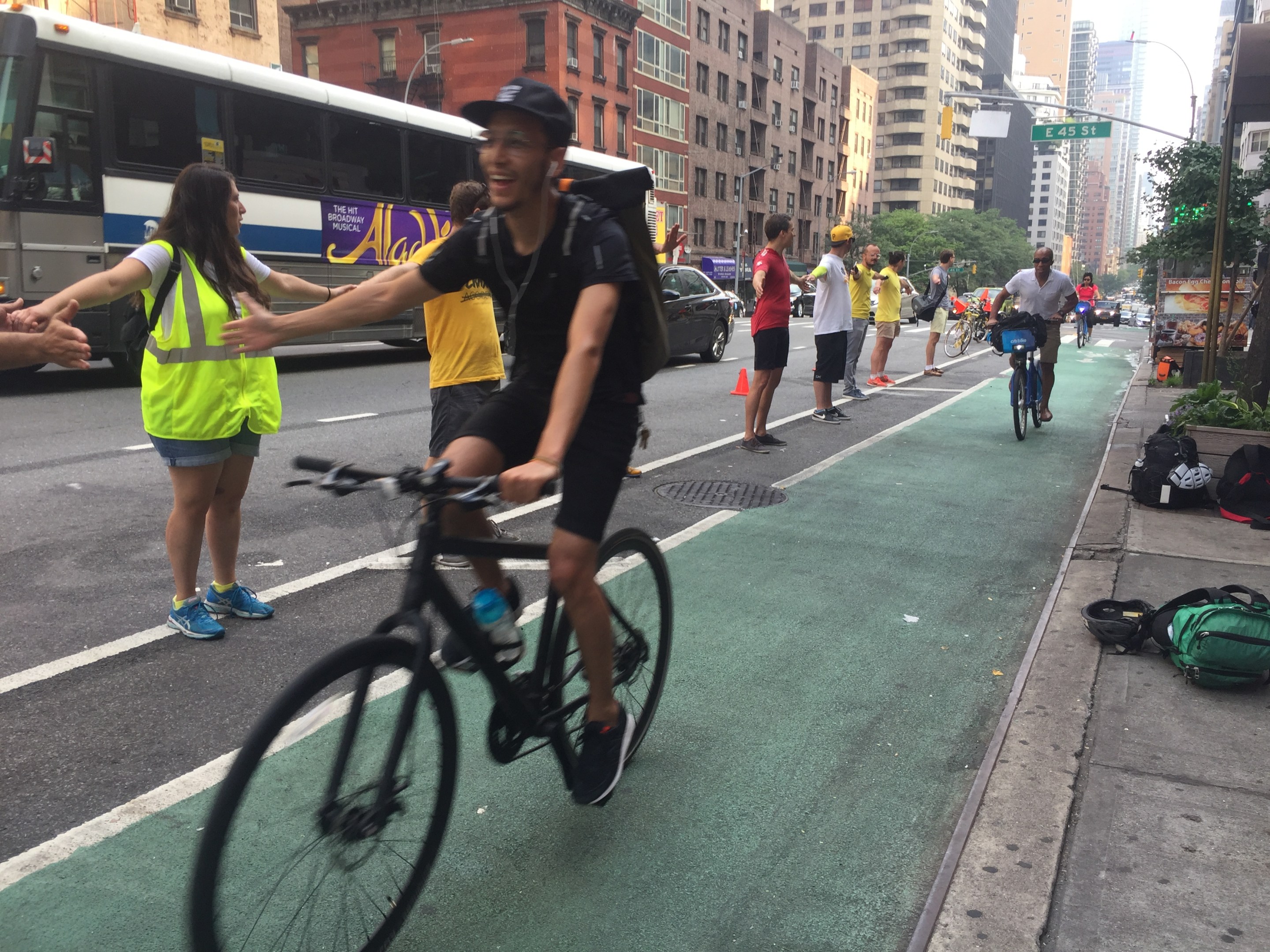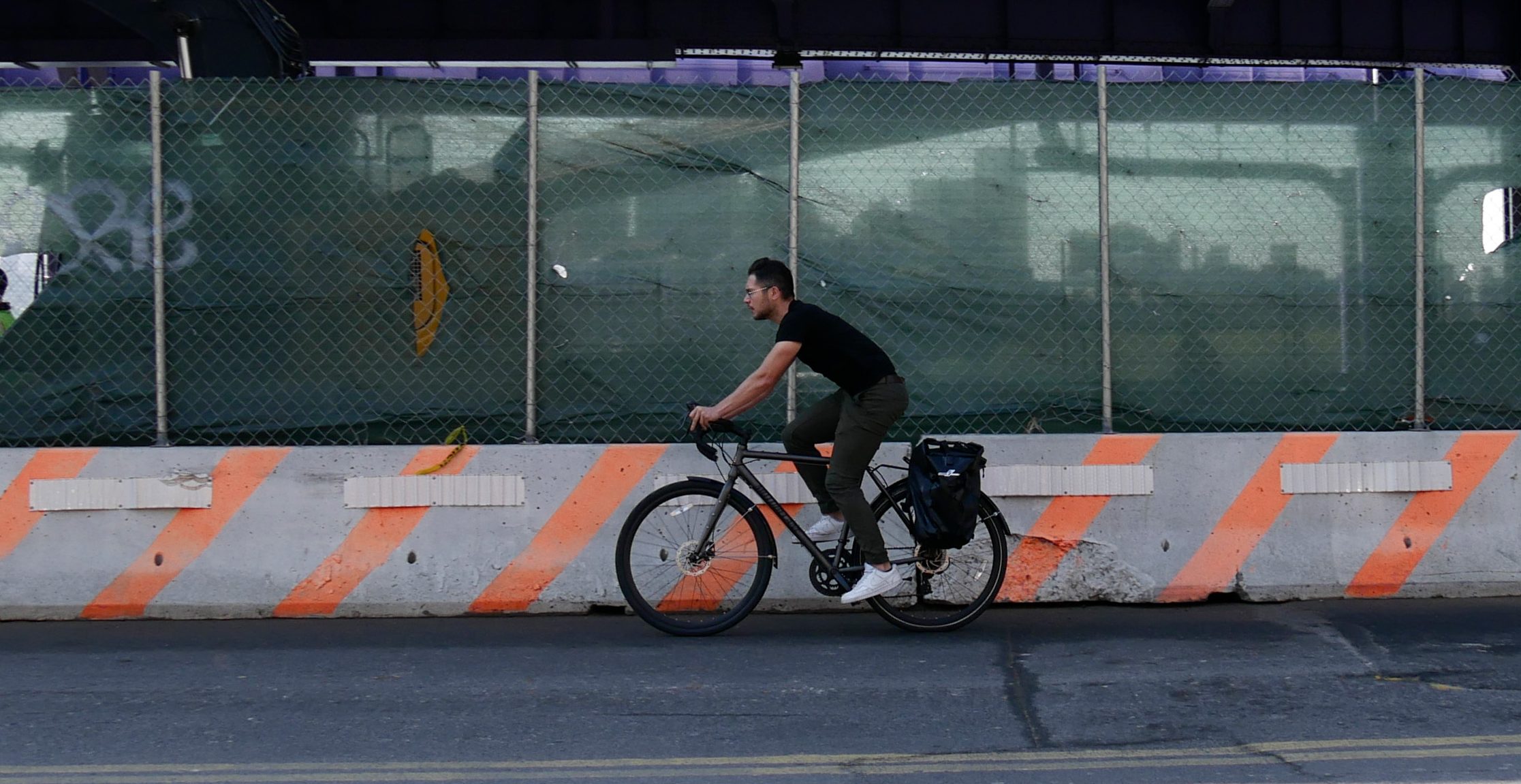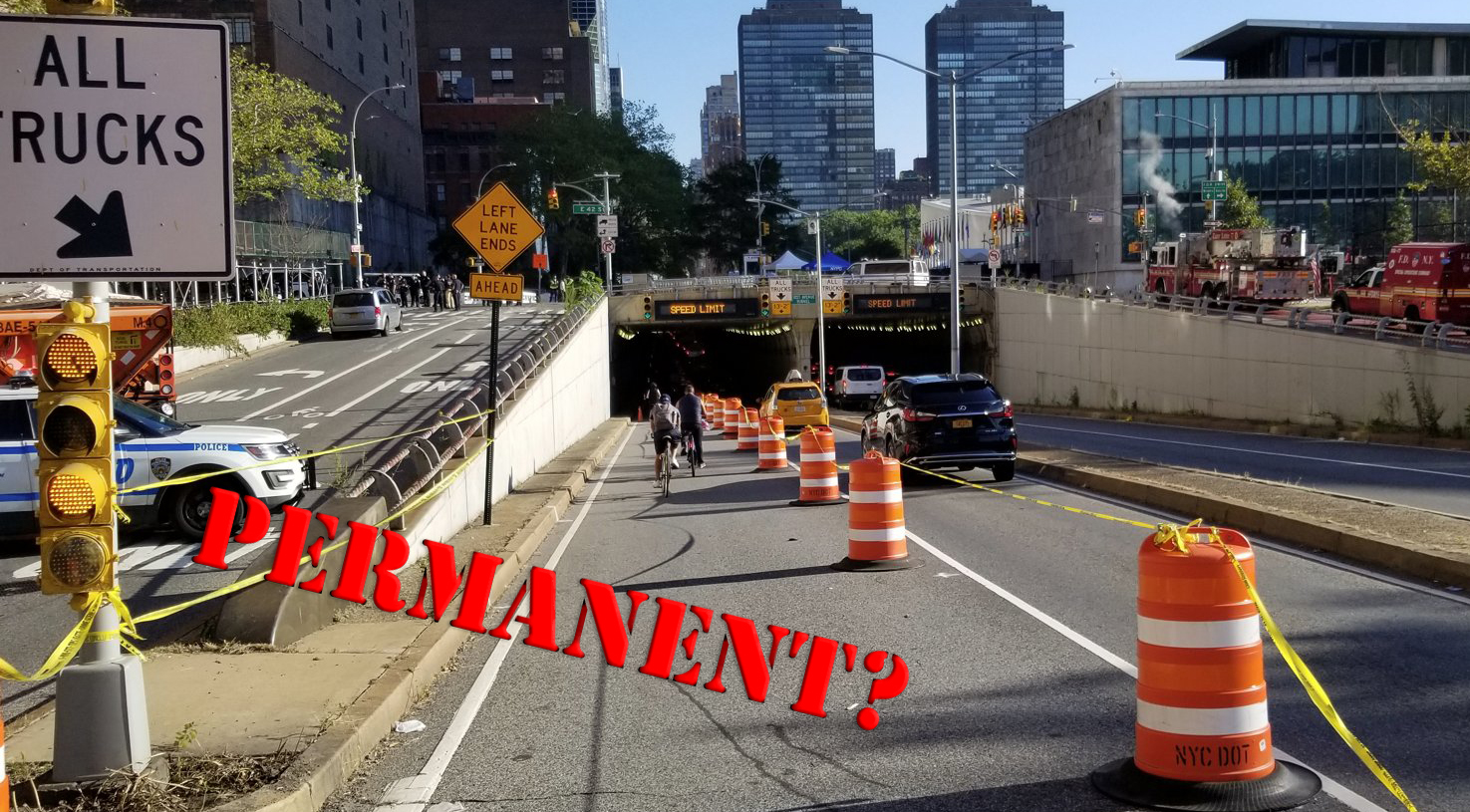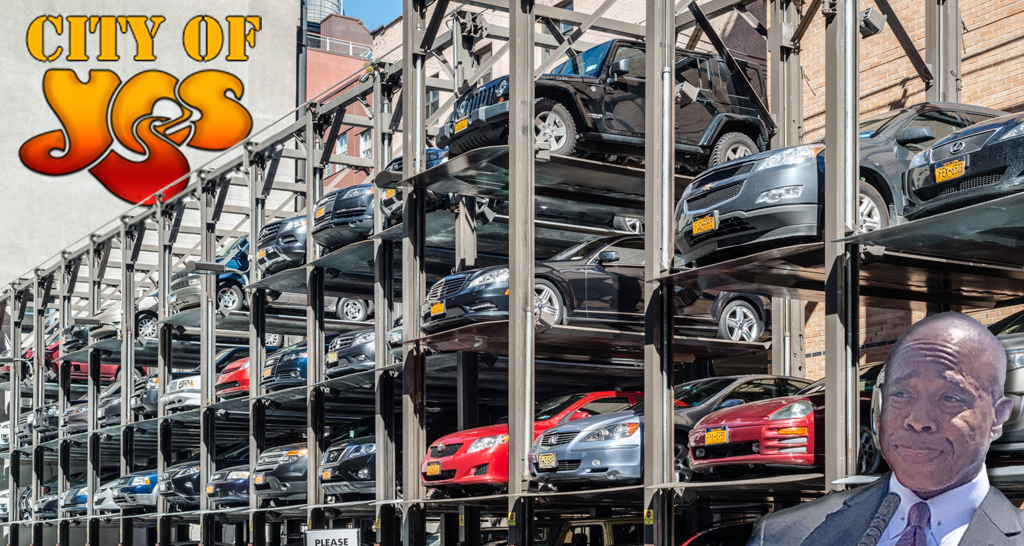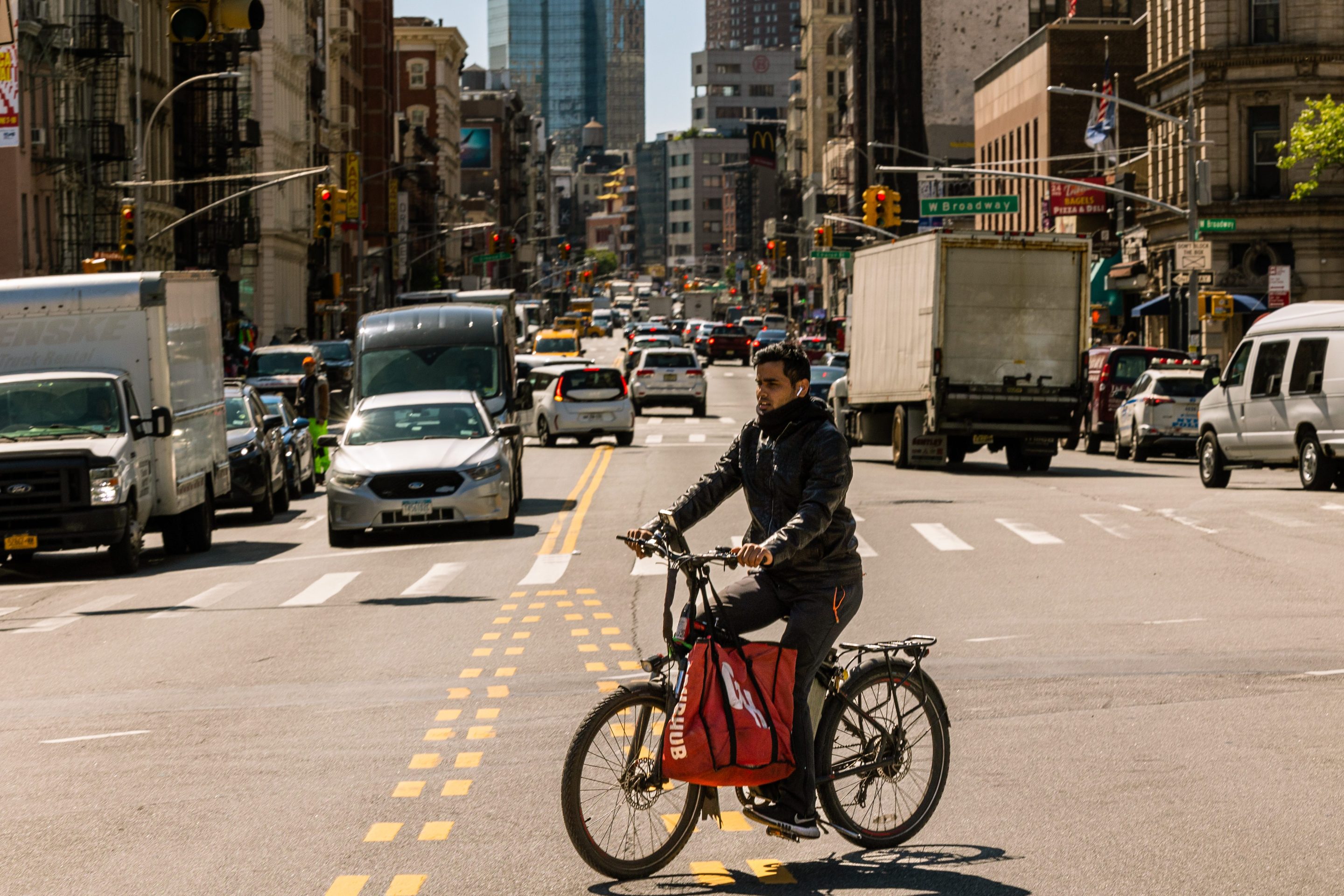Earlier this summer, DOT filled an 18-block gap in the Second Avenue bike lane in Midtown. But there's a big problem with the project: On most of those blocks, the new bike lane isn't protected at rush hour, when the number of cyclists is highest and car traffic is most intense.
So this morning, Transportation Alternatives volunteers took safety in their own hands, lining up between 45th Street and 44th Street to form a "human-protected bike lane" during the 8 a.m. to 9 a.m. rush.
In Midtown, Second Avenue was supposed to get "low-profile tuff curbs" -- plastic barriers -- to keep motorists out of the bike lane during rush hour. (The rest of the day, the space next to the bikeway is a parking lane, which provides protection.) But the agency changed its mind, nixing the treatment "due to safety and accessibility concerns raised during additional design review and product testing."
"Without that protection, people aren't going to be using the bike lane," TransAlt Manhattan organizer Chelsea Yamada said. "We've got 20 to 25 folks here that are using themselves as a substitute for infrastructure. We can't afford to do this every day, we can't afford to do that, to put our bodies on the line, but that's basically what we're doing every day."
Unlike the northbound bike lane on First Avenue, the southbound Second Avenue bike lane still has major gaps in protection. In addition to the rush hour gaps in Midtown, there's no bike lane at all approaching the Queensboro Bridge between 68th Street and 59th Street, nor is there anything approaching the Queens Midtown Tunnel between 42nd Street and 34th Street. TransAlt has collected more than 1,200 petition signatures to close these gaps.
"This is a major thoroughfare, and if you expect bicyclists to use the bike lanes, you have to make our major southbound bike lane safe," said Midtown East resident Joe Enoch. On the new bike lane section along Second Avenue, when parking protection is not in effect, the lane is almost always blocked by a parked cars, delivery trucks, or taxi pick-ups, Enoch said.
Until the lane is fully protected, that's going to continue. That would require either moving ahead with the plastic barriers, or making the parking lane permanent and claiming street space from rush hour motor vehicle traffic, which DOT has been loath to do.
"[DOT] did make it safer, but I don't think they went far enough," said Enoch. "Given how much traffic is here, we need a parking-protected bike lane. They met us halfway with this [tuff curb] thing, and now that's not even here."
This morning's demo showed that the bike lane can be kept car-free during rush hour if sufficient steps are taken. As long as the human chain was intact, no drivers pulled over into the bike lane. As soon as it went away, motorists took advantage.
